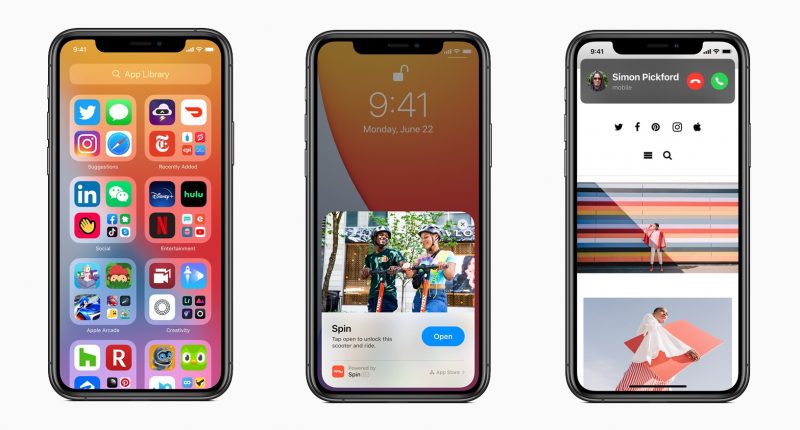After a long wait, Apple has finally come out and announced the iOS 14, a worthy successor to the iOS 13 in every way. The new version of the OS brings along a multitude of new features, which are curated to make the iOS experience oh so smooth and convenient.
First and foremost is the App Library. For an OS as refined as iOS, bringing out new features can be extraordinarily difficult. However, developers keep amazing us, and so goes on the perpetual cycle of downloading new apps. However, this never ending struggle between the phone’s memory and the app store brings a new problem: way too many screens. Users are left scrolling through a plethora of screens before they can find that one godforsaken app that they rarely use. To solve this, Apple has announced App Library.
The new features brings a new window/screen at the end of your scrolling journey, which is a one stop shop for all your apps. Here, all your apps will be bundled together in little groups, including something called “Suggestions”, which will house all the apps Siri thinks you might be looking for. There will be many other folders created by the use of “machine intelligence”, like Social apps, Health & Fitness apps, Entertainment apps etc.
Then come the widgets. Apple has finally announced widgets, and my oh my are they glorious, by the standards of 2015. Yeah, I said it. As good as the new iOS 14 is, why are wudgets a “new” thing in 2020? Non-threatening, you can choose the size of your widget, depending upon your personal preference. For example, if you want a weather widget but don’t want it to take up half of your screen, you can select the widget to appear in its compact version. Similarly, if you love nature a little too much like me, you can choose the biggest version of the widget. You can also choose to drag your widgets across the screen, even scotching them in between apps, which just run around frantically every time they detect a widget being placed nearby.
Moreover, iOS is finally catching up to Android in yet another manner, announcing a much awaited picture in picture mode. However, it seems like Apple has managed to one up Google this time around, as its version of picture in picture mode offers way more customisation than Android’s. Not only can you open your “picture” while scrolling through different apps, you can also slide them at the side of your screen. This allows you to “listen” to what’s going on in your “picture”, without actually having to see a video. The days of being forced to keep your youtube open are over.
Siri is also getting a makeover, with new visuals and a redesigned approach to how you converse with your personal assistant. Now, instead of Siri covering your entire screen you make a request, it will just complete it. For example, saying “Open Safari” wouldn’t bring up a page about Siri opening up Safari (who’s genius idea was that?), but just Open Safari. You can say that it is a move towards higher data abstraction. Also, Siri would now serve you information in terms of notifications. Meaning, if you were to enquire about the weather, you would receive a pop up about the weather, instead of the usual Siri page. You can also use Siri to send audio messages, for dictation, and real life translation.
Expanding upon the “translation” is the “Translate” app, which would work as your very own pocket translator. The app would translate conversations in real life, and cover 11 languages including English, Mandarin Chinese, French, German, Spanish, Italian, Japanese, Korean, Arabic. Portuguese and Russian.
Apps like Maps and Carplay are also getting major updates, including Cycling and EV routes for Maps and “keyless entry” for Carplay. Yes, starting next year, owners of the BMW 5 series will be able to use their phone for access to their vehicles, You can also opt to send keys to other users, including “restricted access” in special cases, like teenage drivers.
Last but not least are the app clips. A feature that has been doing the rounds on Internet for quite some while, and for good reason, is finally here. Now, users of iOS 14 will be able to use non-installed apps for a brief period of time, just as their need arises. For example, say you wanted to park your car but you don’t have the app to register your parking. Well, you can access its app clip, by Apple codes, place cards, QR codes, NFC codes or through messages, and access that app just for the registration process. The feature has been marketed as “fast and quick to discover”, and gives you access to the plethora of apps on the App store at your convenience. Who likes commitment anyway?
There are other miniscule updates too, like the changes to iMessage, the memojis, other superficial changes which don’t really matter and aren’t really “innovative” per say. But all in all, iOS 14 had some cool new additions.
